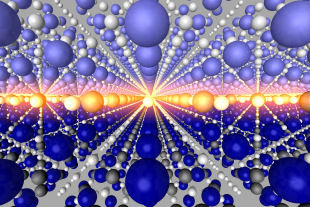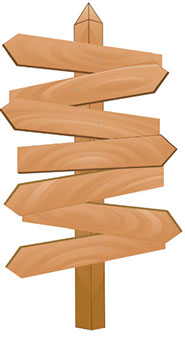
Guanglei Cheng's Home Page
Oxide Interface

LaAlO3/SrTiO3 Interface
©J. Mannhart, A. Herrnberger
Owing to the recent development of material growth methods including the pulsed laser deposition (PLD) and molecular beam epitaxy (MBE), atomically sharp interfaces between materials become available. At these interfaces, the electron-electron interaction is greatly enhanced, leading to novel phases including metal-insulator transition, superconductivity, magnetism and spin-orbit interaction.
A notable example is the (001) LaAlO3/SrTiO3 (LAO/STO) interface, where a polar discontinuity drives electronic interface reconstruction and leads to a 2D electron liquid (2DEL) at the interface. The interface conductivity is critically dependent on the LAO thickness. Below a critical thickness 4 unit cell the interface is insulating, otherwise the interface is conducting.
Since the discovery of the 2DEL in 2004[1], intense interests have been casted on this area. Up to now, the knowledge on this interface is growing rapidly, and so do the debates. The 2DEL is gate tunable, with a critical LAO thickness dependence[2]. The interface is superconducting, an inherent property of STO[3, 4]. More interestingly, it has a similar superconducting phase diagram as the high-Tc superconductor. Although both LAO and STO are non-magnetic, the interface is magnetic[5, 6]. More interestingly, magnetism and superconductivity can co-exist[7-9]. Owing to the inversion symmetric breaking, the interface has strong tunable spin-orbit interaction[10, 11]. Provided all these interesting phases, we invented the conductive-AFM lithography method that allows us to fabricate nanostructures on demand, effectively programing all these properties into nanoscale. Indeed, it is fun to watch all these properties interplay at nanoscale.
[1] A. Ohtomo, and H. Y. Hwang, Nature 427, 423 (2004).
[2] S. Thiel et al., Science 313, 1942 (2006).
[3] N. Reyren et al., Science 317, 1196 (2007).
[4] A. D. Caviglia et al., Nature 456, 624 (2008).
[5] A. Brinkman et al., Nat Mater 6, 493 (2007).
[6] Ariando et al., Nature communications 2, 188 (2011).
[7] J. A. Bert et al., Nat Phys 7, 767 (2011).
[8] D. A. Dikin et al., Physical Review Letters 107 (2011).
[9] L. Li et al., Nat Phys advance on (2011).
[10] A. D. Caviglia et al., Physical Review Letters 104, 126803 (2010).
[11] M. Ben Shalom et al., Physical Review Letters 104, 126802 (2010).

©Copyright Guanglei Cheng 2014 All Rights Reserved
